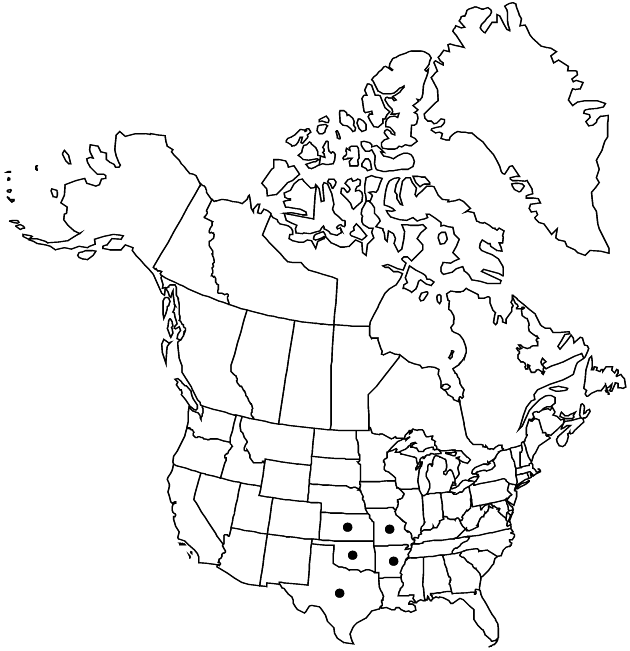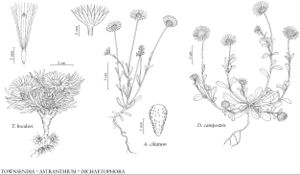Astranthium ciliatum
Sida 21: 2016. 2005.
Common names: Comanche western-daisy
Basionym: Bellis ciliata Rafinesque New Fl. 2: 24. 1837
Synonyms: Astranthium integrifolium subsp. ciliatum (Rafinesque) De Jong Astranthium integrifolium var. ciliatum (Rafinesque) Larsen Astranthium integrifolium var. triflorum (Rafinesque) Shinners
Treatment appears in FNA Volume 20. Treatment on page 204.
Revision as of 20:28, 16 December 2019 by FNA>Volume Importer
Annuals, usually narrowly taprooted. Stems usually 1, erect to decumbent-ascending. Leaves: basal and proximal cauline 15–40(–50) × 3–11(–14) mm. Involucres (2–)2.5–4.5 mm. Ray florets (7–)13–24; corolla laminae white, occasionally drying with bluish midstripe abaxially, (4–)6–10(–12) mm. Disc floret corollas 2–3 mm. Cypselae 1–1.6 × 0.6–0.8 mm, faces minutely longitudinally striate, otherwise nearly smooth, rarely papillate-pebbly, uniformly sparsely to densely glochidiate-hairy. 2n = 8.
Phenology: Flowering Mar–May.
Habitat: Open sandy sites, less commonly in loam or clay, oak and oak-hickory woodlands, roadsides, pastures, grassland, also occasionally (Ark., Okla.) on rocky ridges, limestone outcrops, gravelly stream bottoms
Elevation: 10–100 m
Distribution

Ark., Kans., Mo., Okla., Tex., Mexico (Nuevo León, Tamaulipas).
Discussion
Selected References
None.
Lower Taxa
None.
... more about "Astranthium ciliatum"
Comanche western-daisy +
Open sandy sites, less commonly in loam or clay, oak and oak-hickory woodlands, roadsides, pastures, grassland, also occasionally (Ark., Okla.) on rocky ridges, limestone outcrops, gravelly stream bottoms +
Present +
Sida +
2005 +
Illustrated +
Astranthium ciliatum +
Astranthium +
species +
